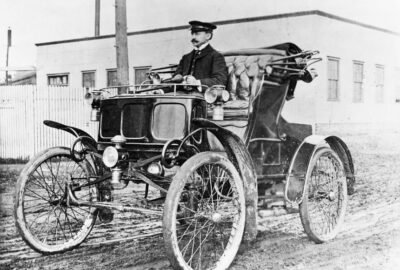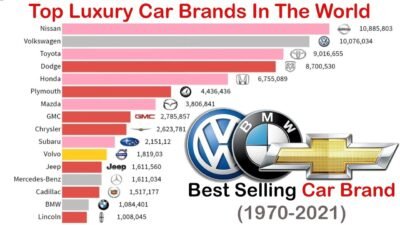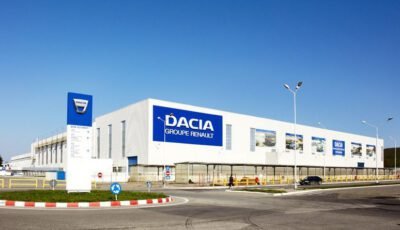The automotive industry has witnessed significant transformations in brand naming and changes throughout history. These changes often result from brand restructuring, ownership changes, or expansions into new markets. This article examines several prominent examples of automotive brand name changes, key acquisitions, and the failure of certain brands.

Brand Name Changes in the Automotive Industry
Over the course of automotive history, several brands have changed their names for various reasons. These changes were sometimes due to acquisitions by larger companies, sometimes as part of brand restructuring, or due to shifts in company strategies.
- Dacia to Renault Dacia In 1999, Dacia, a brand that previously produced economical and affordable vehicles, changed its name to Renault Dacia. This name change allowed Dacia to focus more on models like the Dacia Logan, which gained traction in the European market. Renault, with this change, seriously pursued its strategy of expanding into new markets and producing cost-effective cars.

- Daimler-Benz to DaimlerChrysler In 1998, Daimler-Benz merged with the American brand Chrysler, adopting the name DaimlerChrysler. This merger not only connected two large automotive companies but also led to the production of joint vehicles and an increased presence in global markets. Models from both Mercedes-Benz and Chrysler, such as the Chrysler 300, were produced as a result of this change.
- Hyundai Precision and Industries to Kia Motors In 1998, Hyundai Group, which had acquired Kia, changed the name of this brand to Kia Motors. This name change helped Kia to become a global brand, introducing new models such as the Kia Sportage and Kia Sephia. After this change, Kia was able to expand its market share by offering higher-quality vehicles.
- Scion to Toyota In 2016, Scion, a brand originally owned by Toyota, was fully integrated into Toyota, with former Scion vehicles marketed under the Toyota name. Models such as the Scion iM and Scion tC, which had been known under the Scion name, were now marketed as Toyota vehicles.
- Nissan to Datsun and Return to Nissan In 1933, the Nissan brand changed its name from Datsun to Nissan. However, in 2012, Nissan decided to reintroduce Datsun, offering models such as the Datsun Go in emerging markets.
- Opel to Stellantis In 2021, Opel, as part of the merger between PSA Group and Fiat-Chrysler, changed its name to Stellantis. This name change resulted in Opel models like the Corsa and Astra being produced using platforms shared with Peugeot and Citroën.
Major Acquisitions in the Automotive Industry
In addition to brand name changes, many automotive brands have been acquired by larger companies to expand market share or gain access to new technologies.

- Audi by Volkswagen In 1965, Volkswagen acquired the Audi brand to enter the luxury car market. This acquisition allowed Volkswagen to produce higher-end, quality models under the Audi brand and increase its share of the luxury market.
- Rolls-Royce by BMW In 1998, BMW acquired the Rolls-Royce brand to enter the ultra-luxury car market. This acquisition allowed BMW to produce models like the Rolls-Royce Phantom, which are now iconic luxury cars.
- Land Rover and Jaguar by Tata Motors In 2008, Tata Motors acquired the Land Rover and Jaguar brands from Ford. This acquisition helped Tata Motors gain access to global markets and advanced technologies in the automotive industry.
- Bentley by Volkswagen In 1998, Volkswagen acquired the Bentley brand to enter the luxury car market. This acquisition enabled Volkswagen to produce models like the Bentley Continental, further solidifying its presence in the luxury segment.
- Volvo by Geely In 2010, Geely acquired the Volvo brand from Ford. This acquisition allowed Geely to benefit from Volvo’s advanced safety technologies and produce new models such as the XC60 and S60.
- SEAT by Volkswagen In 1986, Volkswagen acquired the SEAT brand to enter the Spanish market and expand its presence in Europe. After acquiring SEAT, Volkswagen was able to produce newer models like the SEAT Leon.
Automotive Brands That Disappeared
Despite the success of certain brands, several automotive companies have been discontinued due to financial troubles, failure to compete, or misalignment with market needs.
- Pontiac In 2010, the Pontiac brand, owned by General Motors, was shut down due to the financial crisis and declining sales. The brand failed to adapt to market changes and customer preferences, leading to its discontinuation.
- Saturn The Saturn brand was also discontinued in 2010 due to General Motors’ financial troubles and fierce competition from imported vehicles. Efforts to revive the brand and attract investors were unsuccessful.
- Oldsmobile Oldsmobile, one of the oldest automotive brands in the U.S., was discontinued in 2004 due to a lack of innovation and declining sales. The brand was unable to adapt to market changes and was ultimately eliminated from the automotive industry.
Conclusion
The automotive industry is continuously evolving. Brand name changes, major acquisitions, and the failure of certain brands are examples of the transformations that have driven innovation and increased competition in this sector. While some brands have exited the market due to financial issues or an inability to meet market demands, others have succeeded through strategic shifts and mergers.
The future of automobiles remains unpredictable, but innovation and progress in the automotive world are always advancing. To learn more about the future of cars, you can read our article on The Future of Automobiles: Integrating New Technologies and Artificial Intelligence on Highrock‘s website. Our site also features many other exciting articles, including Cybersecurity in Automobiles, which discusses the rising importance of technology in the automotive industry.



